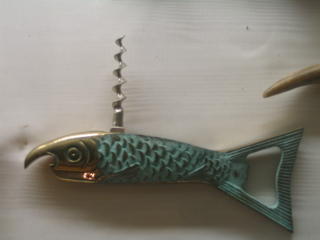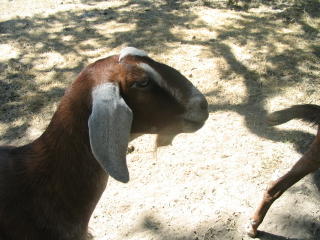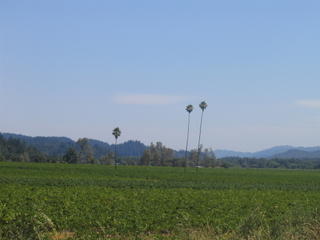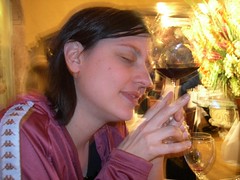
I love Nero D'Avola because it has a peculiar, brooding personality. At its best, it smells of tomato leaf and dark, stewed fruit, with something savory lingering around the edges. At not-so-best, it gets stretched out of proportion in an attempt to make it Cal Cab-like.
The Cusumano wines came to us as direct import, although it didn't seem to make a difference in their retail (which I thought was the damn point). The low-end varietal wines, which retailed around eleven bucks, were fairly good. They sold well (once I put a sign on them that explained what the p-funk Nero D'Avola and Insolia were) and people came back for more. The higher end Chardonnay 'Jale', which was unoaked and quite nice, floundered until an eccentric, moneyed man fell in love and bought three cases of it (people are still reluctant, in my neck of the woods, to spend thirty bucks on Chardonnay from anywhere but California or France). The Sagana and Noa, however, have ended up on the sale rack as of late, so I grabbed one of each and brought 'em home.
Now, just check out the handsome bottle. I have a pic of Sagana here; Noa is the same, but with a black label. A stylishly bold label and heavy bottle boastfully pronounces itself a competitor in the Big Red Wine world. Okay, then, let's see what you're made of.
This wine is like going on a date with a tall, gorgeous, well-built man who is an absolute bore: nice package, nobody home. In an attempt to fit in to the demands of ratings and New World style, this wine is devoid of the dark, brooding beauty of Nero D'Avola. The palate is unecessarily fat with plush, dark fruit and little else. The finish is disappointing. And like a bad date, I tried to hang with it, thinking it might open up a little bit, reveal something complex, something worth the extra time. But no. Just a lot of empty posturing with nada to back it up.
Oh, Sicily! Why do you try to make Nero D'Avola into Cabernet? WTF with the malolactic fermentation? Please, for God's sake, spare this lovely grape!
I am almost too depressed to make note of the Noa. But I'll try. As a Cabernet/Merlot/Nero D'Avola blend, it makes sense that it is a fat, malo-tacular affair. This wine is actually more palatable to me, being chock full of cassis and blackberry, with nice soft tannins. Nevertheless, more than a couple of mouthfuls and I'm having those fantasies about Luan Bodegas 'Equis' again.
So these dullards, however well-rated, are definitely not on my list of fine Sicilian juice. I'm glad they're getting themselves on the map and all, but at what cost?
Clinkies.
Clinkies.
 Brother Timothy, world reknowned cellar master for the Christian Brothers and pioneer of Napa Valley winemaking, had apparently a love for novelty paraphenalia. This impressive display of some of the near-2000 bottle opening tools from around the world (some dating back the the 18th century) is one of the most fascinating things about the Greystone campus and great for avoiding nerdy conversations before class.
Brother Timothy, world reknowned cellar master for the Christian Brothers and pioneer of Napa Valley winemaking, had apparently a love for novelty paraphenalia. This impressive display of some of the near-2000 bottle opening tools from around the world (some dating back the the 18th century) is one of the most fascinating things about the Greystone campus and great for avoiding nerdy conversations before class. How fabulous are these guys? I love the look on the waiter's face. The heads come off and are the handles of the screws.
How fabulous are these guys? I love the look on the waiter's face. The heads come off and are the handles of the screws.
















